
“What is the Harvest?”
“ Now the one who provides seed for the sower and bread for food will also provide and multiply your seed and increase the harvest of your righteousness. ”
The law of the harvest is simple: “God makes things grow.” However, God gives His people the joy of being a part of the harvest by leading them to plan, give, share, equip and go. Certainly, the people who started First Baptist Church in 1850 in no way could have anticipated how their faithfulness in following God’s leading to plant would grow into what we see today. The roots go back even further to around 2000 years ago when eleven disciples discovered an empty tomb. Ironically, the first members here in 1850, eleven to be exact, chose to plant a seed known as Hickory Grove Church some three miles north of what we know today as First Baptist Church.
The Harvest Project seeks to accomplish three main things:
• Creating a centralized welcome and gathering space, allowing families to feel connected even when engaged in age-individualized areas thus creating community. The community connection will create space where the First Family can engage all ages in connecting with each other.
• Increasing space for the First Family to gather and worship in both the Sanctuary and the Fellowship Hall with room for growth. Additional and renewed space will also be provided for small group discipleship and grow groups of all ages as the three phases are completed. Visionary leadership will continue to allow the First Family to remain vibrant and healthy while preparing for those yet to come.
• Enlarging the parking lot to provide additional parking spaces, enhanced safety and convenient access through a series of connecting walkways which will lead to a centralized area.

The Harvest
Project
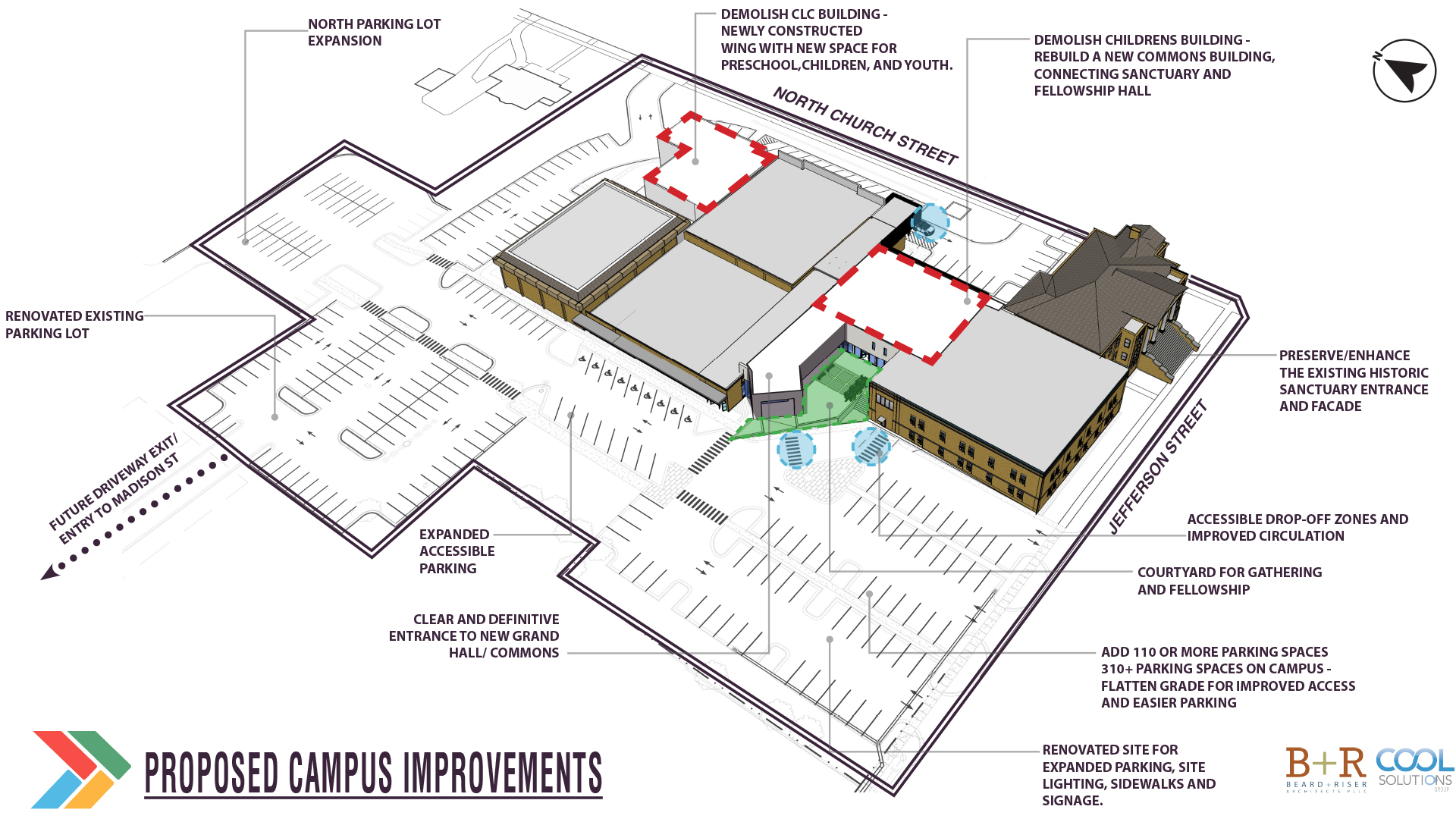
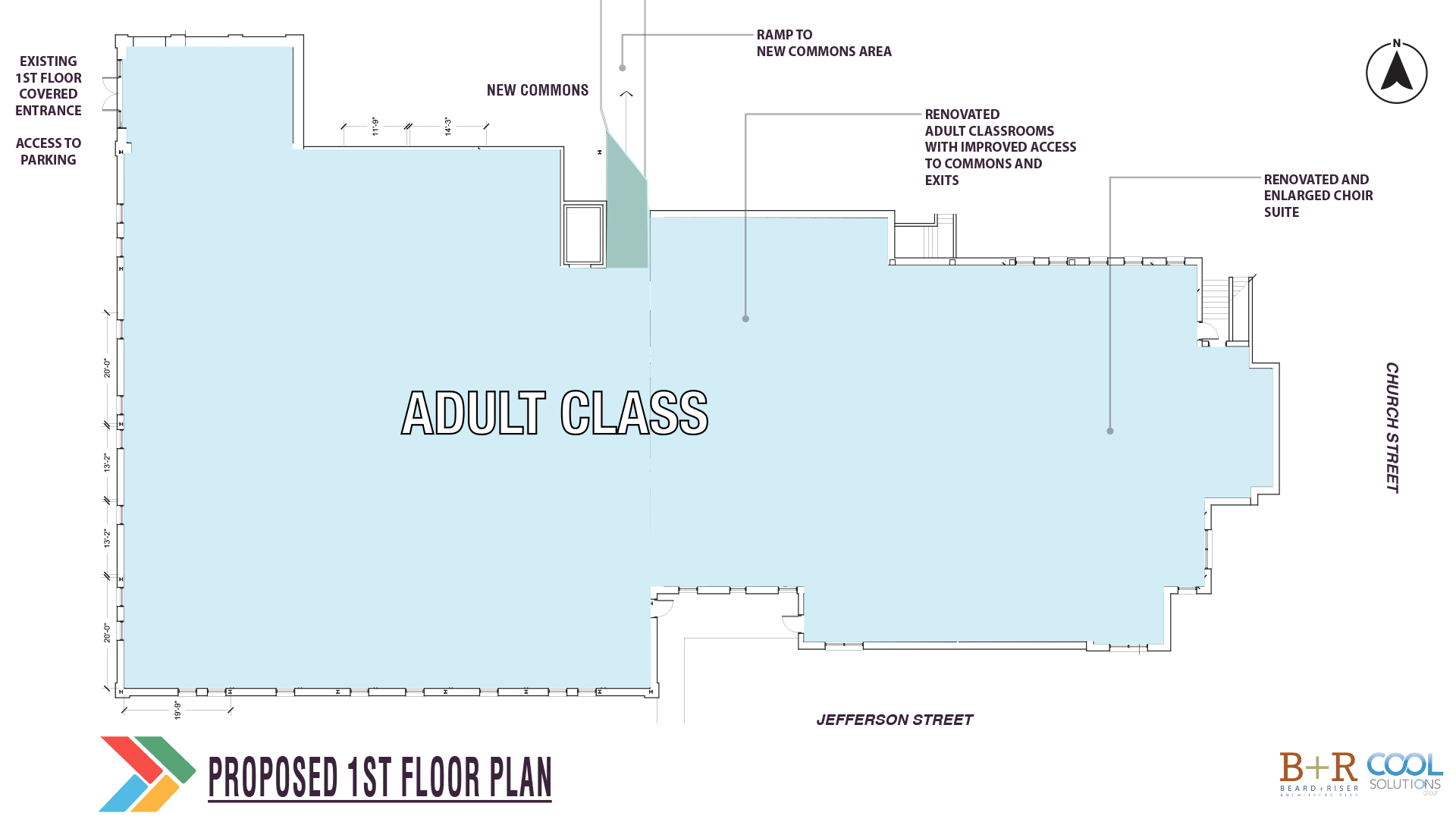
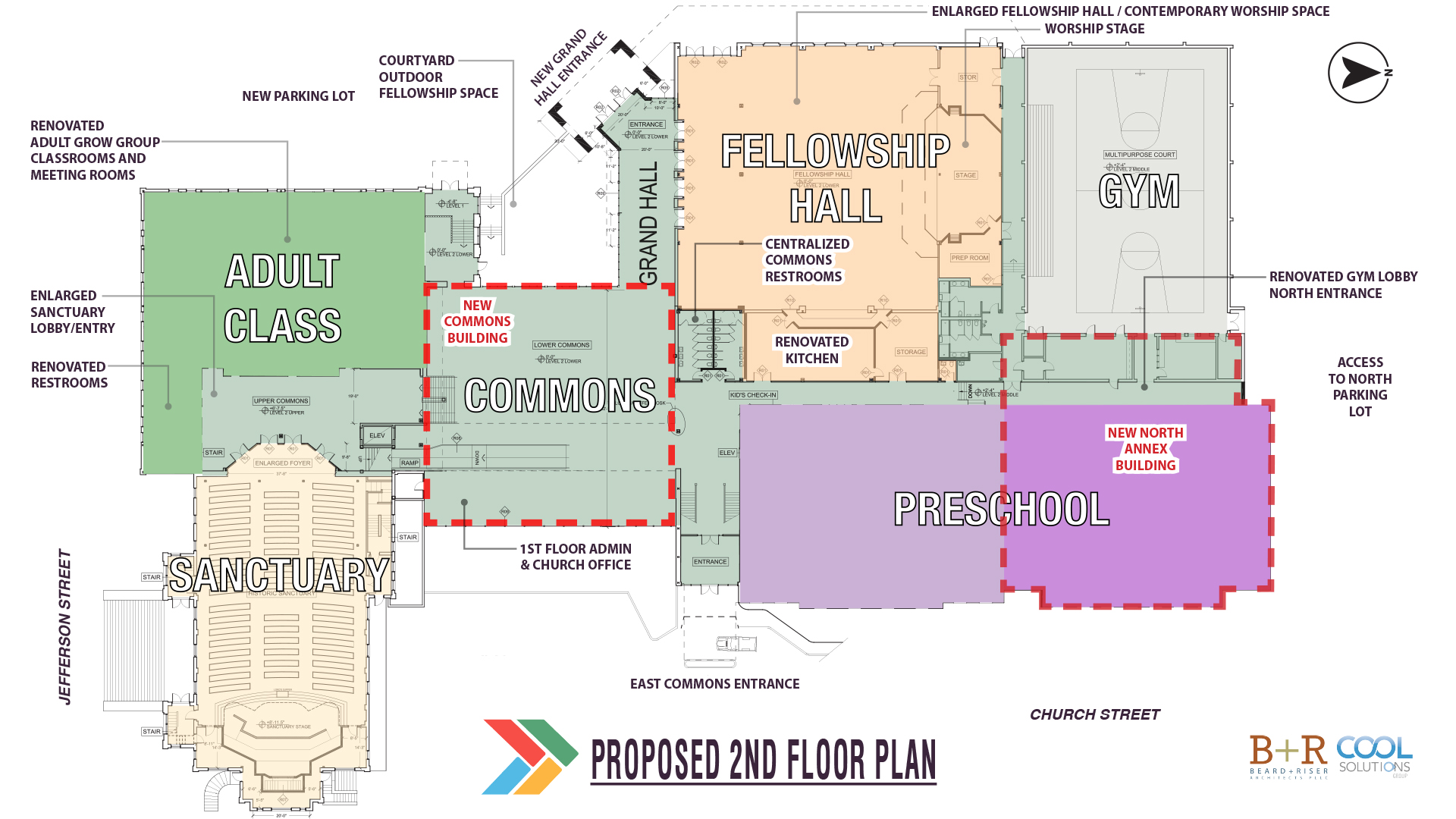
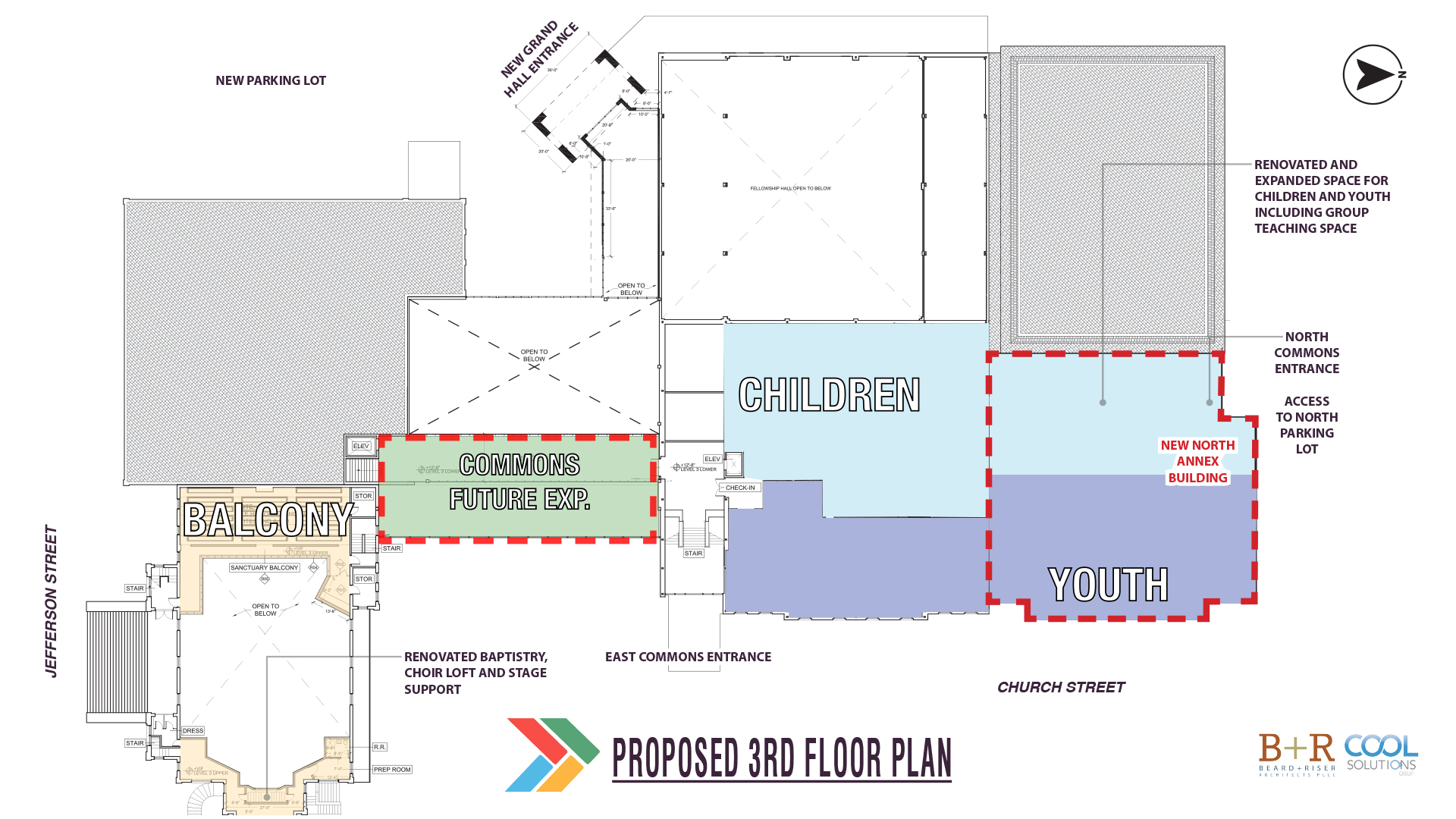
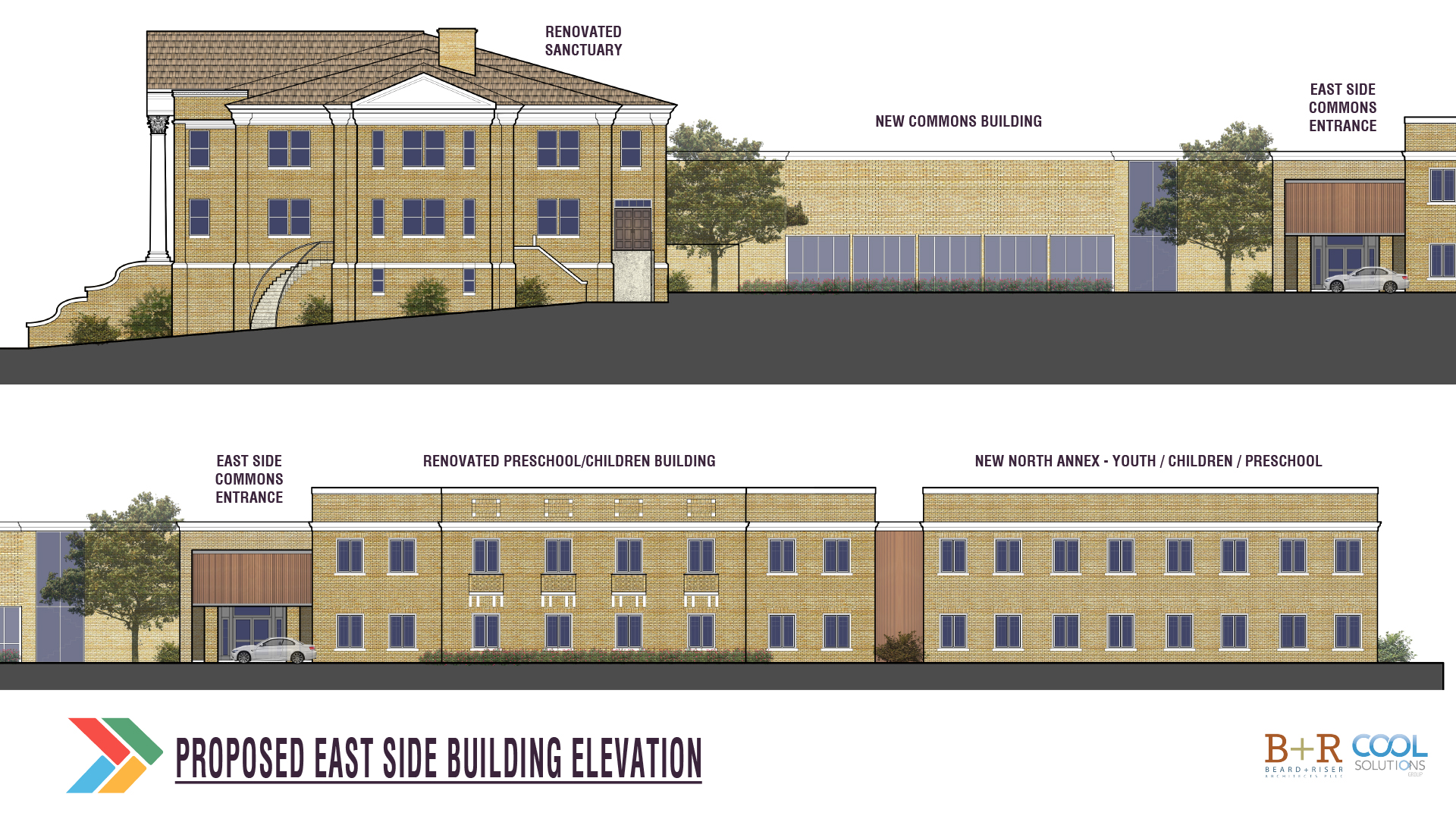

People of the Harvest
“The one who sowed the good seed is the Son of Man”

Harvest Resources
Click one of the buttons below to download Harvest media

FAQ
Frequently Asked questions
General Questions
1. How did the church come to adopt the current Master Plan in October 2018?
In 2004 the church started discussing the path to Vision 2020 and how FBC Tupelo would remain a vibrant and growing church. After almost three years of meetings and discussions, the church adopted the Vision 2020 Strategic Plan as the method for moving our church forward. The initiatives in this plan have been updated periodically. The most recent update to the Strategic Plan, adopted by the church in May 2017, challenged the church to think about the need to provide campus improvements and expansion for future growth. From this Strategic Plan update, the church’s Property Committee submitted names to the church to form a Building Committee, whose function would be to research and provide a path to help the church realize the goals put forth in the Vision 2020 Strategic Plan. The Building Committee formed a strategy, interviewed consultants, and recommended hiring a church design consultant. Beard + Riser Architects and Cool Solutions Inc. were approved by the church in September 2017. The Building Committee worked with the design consultants, staff, and stakeholder groups from that time to propose a new Facilities Master Plan that was recommended and approved by the church in October 2018.
2. What has happened with the development of the Facilities Master Plan since approved by the church in October 2018?
The church adopted the current Facilities Master Plan as presented by the Building Committee on October 14, 2018 receiving an approval rate of 96.3%. At the same time, a vote to join with InJoy Stewardship Resources as a Capital Campaign Consultant received an approval of 96.3%. Since October, the Building Committee, Stewardship Committee and others have spent countless hours putting additional time in studying and developing the Master Plan, and the Stewardship Committee has worked to put together a Capital Stewardship Leadership Team to lead “The Harvest” Capital Campaign.
3. What items have been addressed over the last ten months?
· Worked alongside Beard & Riser Architects and Cool Solutions to continue developing the plan, including additional design work, bringing the schematic design work to 50% completion and creating preliminary layout for accurate construction estimating.
· Interviewed contractors and proposed contracting with JESCO, Inc. to give point pricing on the project rather rough estimates by a project estimator.
· Worked closely with InJoy Stewardship to develop preliminary details on the capital campaign (Stewardship Committee).
· Enlisted a Capital Campaign Leadership Team, made up of eighty plus church members to lead the campaign (Stewardship Committee).
· Trained the Capital Campaign Leadership Team, alongside InJoy Stewardship, to lead the church family through this exciting faith journey of planting by faith for the harvest to come.
4. Where in the design phase is the Building Committee?
The Building Committee is currently at a schematic design of about thirty-five to forty percent. Details as related to the exact design, location of doors and walls, along with other design details, will be developed in the next phase, once the committee knows the financial commitment from the church and the overall construction. The next design phase will include meetings with specific ministry area leaders to get input on specific design needs for ministry areas.
5. How will the design phase be carried out?
Once the church completes the financial commitment phase on September 22, 2019, the Building Committee and the Stewardship Committee will work together to finalize the design of ministry areas. These committees will then bring a final building design and a plan for financing the project back to the church for a vote.
6. What areas of the building will be renovated under this plan?
The current church complex encompasses approximately 92,000 sq. ft. The Facilities Master Plan touches all 92,000 sq. ft. in some manner. The interior of the gym is the area least impacted by the renovation. A full in-depth explanation will be shared once the design phase is complete. The major areas of impact are listed below.
· Gym lobby building will be removed, and a new two-story building will be constructed to accommodate current and future ministry needs for the Preschool, Children and Youth ministries.
· The current Children’s Building will be removed, and a new, open-air Commons will be constructed. The Commons area will provide an open-air common point of entry to the building from all points on campus and an area for fellowship for the church body on Sunday, Wednesday and special events. The Commons will also provide easy access to all ministry and worship areas of the church building.
· The Fellowship Hall will be completely renovated and expanded to accommodate growth in the contemporary service, as well as provide increased space for church fellowship.
· The Sanctuary will be renovated to improve electrical, lighting, heating and cooling, baptistry, and stage design. New seating (pews or something similar) will be installed to increase capacity. Overall cosmetic renovations will enhance the traditional nature of the Sanctuary.
· Office space will be relocated to a central part of the campus adjacent to the commons.
· The Adult Sunday school space will be renovated, with some relocation of walls and opening of corridors, along with a new and enhanced music suite.
· New electrical, HVAC, fire control, security, and sprinkler systems will be installed to meet current code requirements.
· The gym play area will receive new fire protection and a sprinkler system.
7. Where will we have church during construction?
It will be exciting to see all the new work taking place, but some areas will be off limits at various stages of the construction process. The phasing will be completed in a manner that will provide the most useable space for the congregation during the construction process. Classes will be relocated during construction. Worship will be held in the Sanctuary for both services during the Fellowship Hall renovation, and the Fellowship Hall will be used for worship services during the Sanctuary renovation.
8. Will the Sanctuary have theatre seating installed as was discussed some time ago?
The type of seating for the Sanctuary is yet to be determined. The renovation options will be based upon funding. However, it is more likely that one would find new pews or new modified pews with individual seats that looks like pews. To be specific, the likelihood of one seeing the type of theatre seating presented several years ago is highly unlikely for the main Sanctuary.
9. How much will all the proposed renovations cost?
The Building Committee partnered with Jesco Construction, Inc., to provide cost pricing estimates for the entire project and to provide a recommendation on phasing the project from start to finish. If the church can move through the phasing to complete the entire project as recommended by Jesco, presented in the preliminary pricing estimates, the total projected estimated cost of construction is $13,275,000. Additional soft costs of $2,725,000 is projected, for an estimated total cost of $16 million.
10. Wow, that is a lot of money! What are soft costs?
Soft costs cover expenses related to architect design fees, engineering costs, financing costs, closing costs, furnishings, special lighting, sound, kitchen equipment and other non-construction costs.
11. Did the Building Committee look at the feasibility of relocating instead of investing in the current campus with a limited footprint and aging buildings?
The Building Committee investigated the possibility of relocating and building a new campus. The church currently occupies 92,000 sq. ft. The price to build a new 92,000 sq. ft. campus would be $32,200,000, excluding land, permits and infrastructure. The consultant shared that if the church relocated, the construction would most likely be in the 70,000 sq. ft. range, which would carry a cost of $24,500,000, excluding land, permits and infrastructure. The Building Committee concluded the best solution is to renovate and add to the current location to meet the strategic goals put forth by the church at a cost of $16,000,000.
12. How much needs to be raised through the “The Harvest” Capital Campaign?
The church needs to raise the entire $16 million to do the work debt free. However, once commitments are received, and the Stewardship Committee has an opportunity to review the pledge totals, they will be able to provide a funding recommendation to the church for approval.
13. Will the church incur debt to complete the project?
The goal of any church should be to have little to no long-term debt. The amount of potential debt service for the church depends upon how the Lord provides through His resources and the financial resources of His people. Each member will be asked to join in the spiritual faith journey to seek the Lord’s direction on what He would have each one to sacrificially give to realize the goal. Any debt assumed for the project would be dependent upon a vote of the church.
14. First Baptist Church has always built debt free! Why would we consider debt on this project?
Again, we are in a faith journey, trusting the Lord to provide financial resources to cover the costs of the proposed construction project. FBC Tupelo has a long history of not carrying long-term debt to build and renovate the church buildings. One project that stands out in the minds of many long-time members, the 1980’s project, did not require the church to take on any debt. We give thanks to the Lord for that $1.9 million project. However, the church financed different projects through the years to complete the projects.
15. How much did the Grand Hall/Fellowship Hall project cost in 1997, and how much would it cost to build today?
The cost to complete the Grand Hall/Fellowship Hall building in 1997 was $3,623,647. To build the same facility in today’s dollars, the cost would be $7,305,740
16. When will construction start, and what is the projected completion date?
The start date depends upon the ability of all involved parties to get final design work and financial strategy in place and approved. The goal is to have a ground-breaking ceremony on Sunday, April 19, 2020, the Sunday after Easter. Based on initial cost pricing, Jesco estimates that the entire project should take 18-24 months to complete. The project could potentially be completed by December 2022.
17. Does the project provide funds to purchase real estate surrounding the current church property?
The current budget does not provide for funds related to future real estate purchases.
18. Will the parking lot be expanded and renovated?
Yes, the current parking lot will receive major renovations, including grade changes as needed to make the parking lot more accessible for all. Additional handicapped spaces will be provided, remaining areas of the parking lot will be overlaid, and parking will be expanded to include some of the green spaces currently owned by FBC Tupelo. The parking capacity will increase by approximately 110 parking spaces. The total on-campus parking spaces will increase to approximately 310 spaces. This does not include the Pegues area used by FBC Tupelo on Sunday.
19. Will the renovations provide additional restrooms and a family restroom?
Plans are to provide at least one family restroom on campus. Plans include additional restrooms. The exact location and details will be completed during the final design phase. Existing restrooms will be renovated or relocated.
Questions Directly Related to the Capital Campaign
1. Should I transfer my regular budget offering and start giving that to “The Harvest” Capital Campaign?
No, the regular tithe and offering should be given to the operational budget of FBC Tupelo. This is the offering you give week by week. Your tithes and offerings go to fund missional outreach of the church, discipleship of members, day-to-day operational costs and ministry budgets for adults, youth, children and preschool.
2. I have never given tithes or offerings to FBC Tupelo. Should I give to “The Harvest” Fund or to the regular budget offering?
We are blessed whenever an individual or family makes a bold move of trusting God, regardless of the fund. Often through a capital campaign and other special opportunities to give, one learns about the joy of giving by taking that first leap; making a commitment to “go all out” and learning to tithe through the process. Others want to do first things first by giving to the regular church budget offering. Either way, your gifts and offerings will be celebrated.
3. May I donate stock, assets or other non-liquid gifts?
Yes, giving from net worth can be a very wise way to give. If you have stocks, bonds, or mutual funds that are worth more than you paid for them, and you have held them for more than a year, you can give appreciated shares directly to FBC Tupelo. Giving appreciated non-cash assets before you sell can be a much wiser solution than liquidating the stock and locking in a capital gains tax. FBC Tupelo advises that you contact your CPA or financial advisor to determine the most beneficial method of donation for everyone involved.
4. How is FBC Tupelo’s financial situation in general?
The church has experienced three years of strong regular tithes and offerings. In 2016 the average weekly offering was $37,352, while the current weekly average for 2019 is $44,212. The offerings year-to-date are currently $61,009 above budget requirements. Overall, FBC Tupelo is in a healthy financial situation as we enter the campaign. FBC Tupelo currently does not have any debt and operates with an operating reserve of approximately two months. The Capital Accrual Account maintains a range of $90,000-$100,000 for emergency repairs and capital improvements.
5. When can I begin to give to “The Harvest”?
You may give at any time. You may give weekly, bi-weekly, monthly or annually beginning now.
6. How can I give specifically to “The Harvest”?
There are several ways in which you may give to “The Harvest”.
· Through the traditional offering envelopes (Just write Building Fund in the memo line)
· Through the kiosk (Select Building Fund)
· Through text
· Through the giving tab on the www.fbctupelo.org website (You can set up recurring or one-time gifts according to what works best with your budget.)
· Through Bank Draft, established through the FBC Tupelo finance office
If you have additional questions about ways to give, contact Bro. David Hall for assistance. He can be reached at dhall@fbctupelo.org or (662)-842-1327.
7. Does FBC Tupelo leadership believe this is something God is leading us to do?
This is a journey that began back in 2007. Over the past decade, our leaders have met, prayed, and deliberated over how we could be the best stewards of our building as we move further into the 21st century. The Building Committee alone has met for over two years. We can say with confidence that this project has not been rushed; nor has it been flippantly considered. Just because we don’t know all the details of the future in no way means that we do not believe that God is the one who has led us to this point.
8. Is this the right time for a campaign?
We acknowledge that a campaign will require sacrifice from each of us. While we can see God’s faithfulness to us over the past three years with record giving of tithes and offerings, sacrifice is never trifle or easy. Sacrifice is not about timing; it is about purpose. We believe that because God has led us to this place, He will guide us through a Capital Campaign.
9. How long a commitment will I be making?
The typical campaign commitment is for 36 months. You can give weekly, bi-weekly, monthly, or in a lump sum.
10. How will we pay off the debt if we have to secure financing to complete the project?
This could occur in several ways. First, it could occur through gifts not pledged that will be received over the three-year commitment time. Secondly, debt service could be figured into the overall ministry budget of the church, which would require an increase in the budget and reductions in ministry funding. Lastly, debt retirement could be a second campaign following the initial three-year commitment time.
11. What is the maximum amount of debt the church will assume if needed to complete the project?
If a need exists, the amount the Stewardship Committee would recommend to the church for approval is yet to be determined. The Stewardship Committee will examine the debt service required. They will examine our church budget to determine a good debt service load for our congregation, should the need arise. Typically, debt is recommended not to exceed three times your annual budget. Based on this very preliminary idea and using our church budget for the 2018-2019 church year, the top end of debt service would be $6,770,000. It is our prayer that should any debt be required, it would be much less than this amount.

